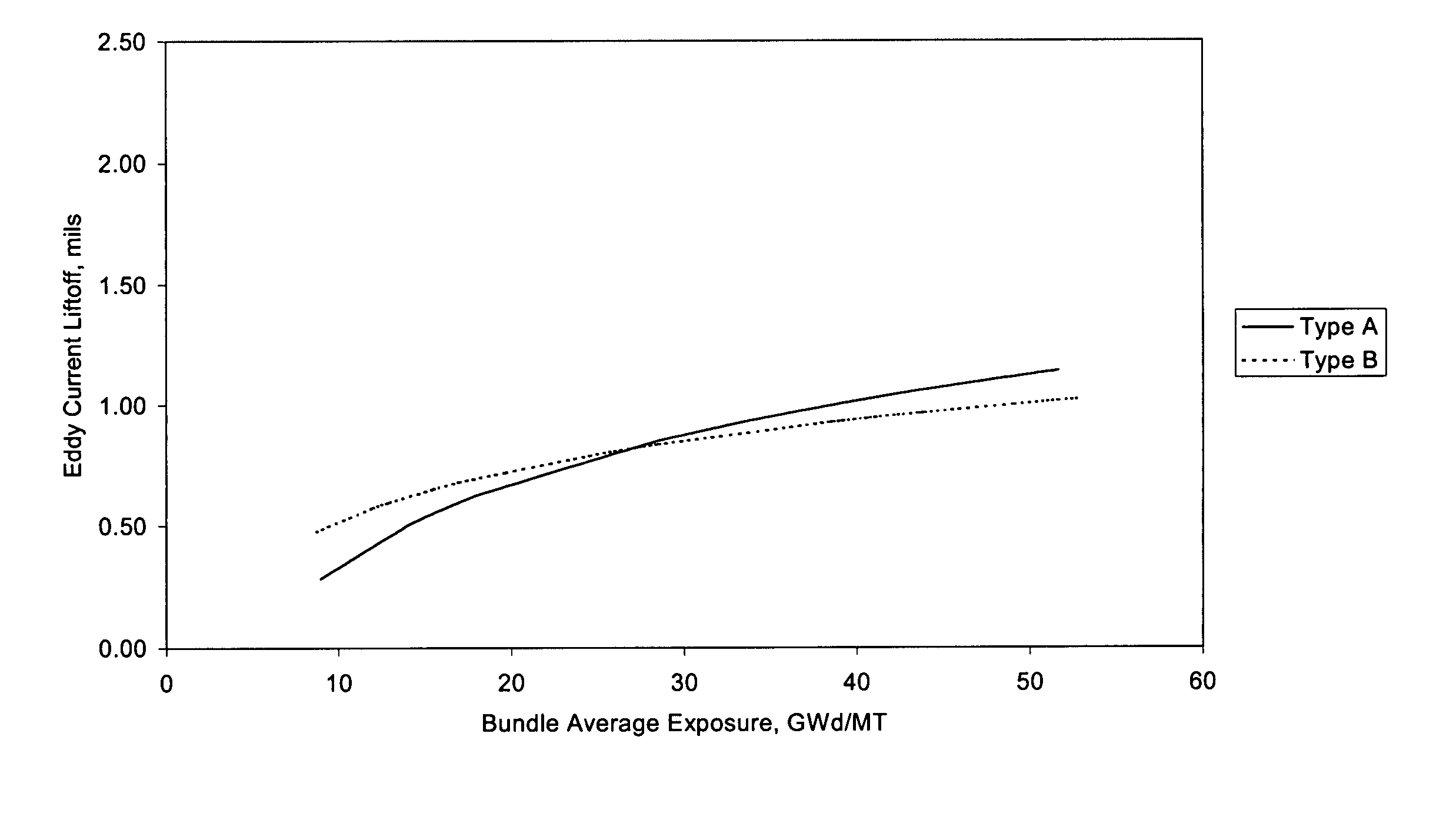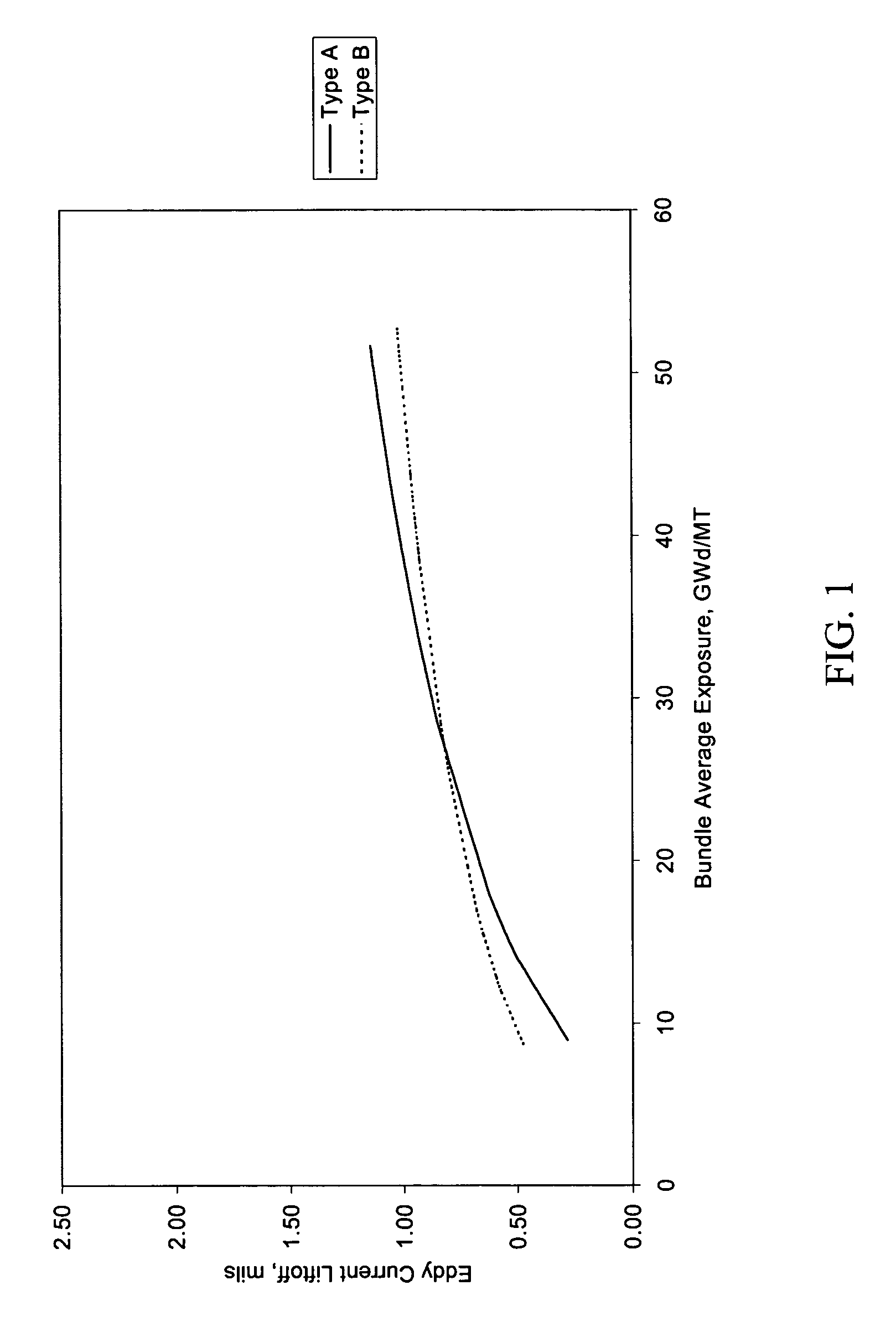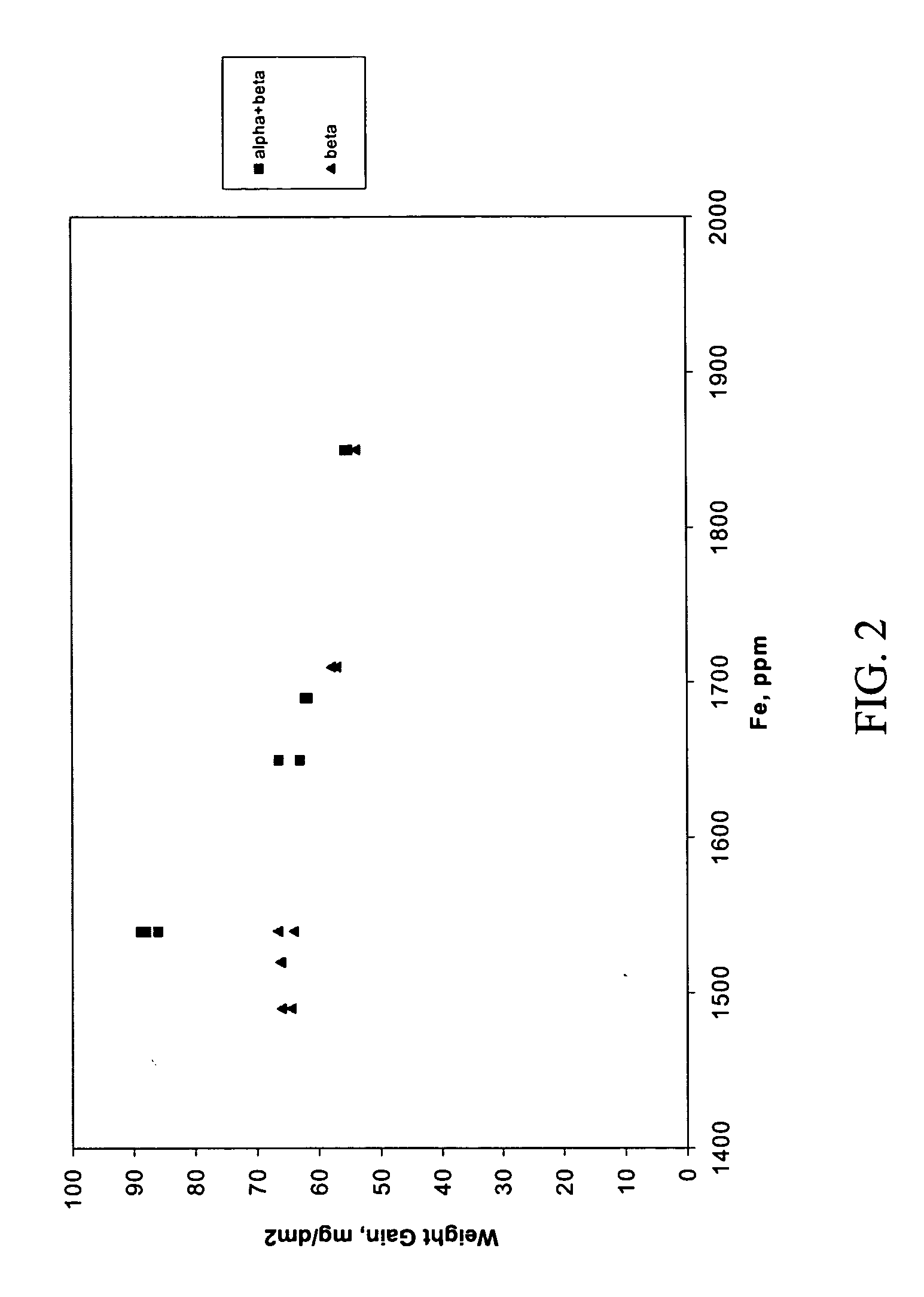Zirconium alloy fuel cladding for operation in aggressive water chemistry
a fuel cladding and aggressive water technology, applied in the field of zirconium alloys, can solve the problems of limiting reactor operation, releasing highly radioactive species to the coolant, localized overheating and accelerated corrosion, etc., and achieves the effects of promoting significant ostwald ripening, easy determination, and easy dissolution
- Summary
- Abstract
- Description
- Claims
- Application Information
AI Technical Summary
Benefits of technology
Problems solved by technology
Method used
Image
Examples
Embodiment Construction
[0031]In accordance with an exemplary process according to the present invention, a Zircaloy-2 alloy ingot having a Sn concentration of within a range selected from 1.30-1.60 wt %. The other alloying elements will include a Cr concentration of about 0.06-0.15 wt %, a Fe concentration of about 0.16-0.24 wt % and a Ni concentration of about 0.05-0.08 wt %. The total content of the Fe, Cr and Ni alloying elements included in the alloy will be above about 0.31 wt %.
[0032]An ingot having an appropriate composition is then preferably formed into a hollow billet by hot forging, machining or a combination of processes. The billet is then subjected to a β-quench process in which the billet is heated to a temperature typically above about 965° C., but preferably between about 1000-1100° C., maintained at or near that temperature for a period of typically at least 2 minutes, and then rapidly quenched to a temperature well below the α+β-phase range, e.g., below about 500° C. and typically below...
PUM
| Property | Measurement | Unit |
|---|---|---|
| outer diameter | aaaaa | aaaaa |
| temperature | aaaaa | aaaaa |
| temperature | aaaaa | aaaaa |
Abstract
Description
Claims
Application Information
 Login to View More
Login to View More - R&D
- Intellectual Property
- Life Sciences
- Materials
- Tech Scout
- Unparalleled Data Quality
- Higher Quality Content
- 60% Fewer Hallucinations
Browse by: Latest US Patents, China's latest patents, Technical Efficacy Thesaurus, Application Domain, Technology Topic, Popular Technical Reports.
© 2025 PatSnap. All rights reserved.Legal|Privacy policy|Modern Slavery Act Transparency Statement|Sitemap|About US| Contact US: help@patsnap.com



